Les Paul entry-level
Les Paul Junior, TV Model, Special, Melody Maker
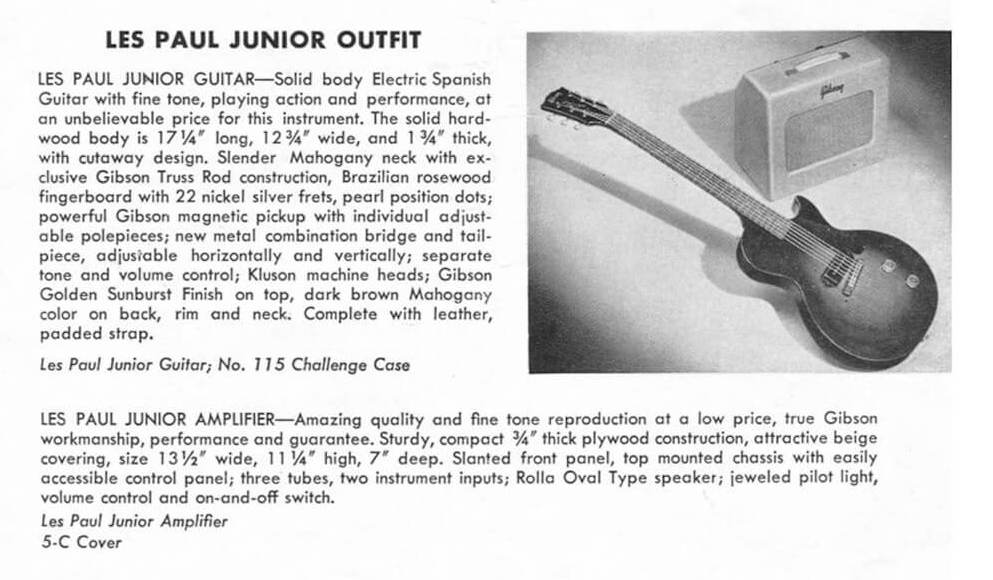

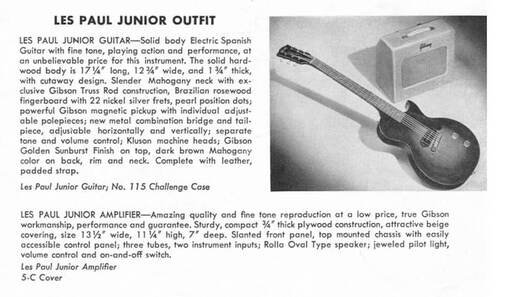 The Les Paul Junior on the 1954 catalog
The Les Paul Junior on the 1954 catalog
|
Les Paul and Mary at Home
|
After the success of the radio show Les Paul and Mary Ford Show, presented on NBC in 1950, between 1954 and 1959 the couple landed on television with the five-minute show Les Paul and Mary at Home, in which the couple was being filmed in their home in Mahwah, New Jersey. In these short shows, often sponsored by Listerine, the guitarist invited his wife to sing a song with him. Gibson took the opportunity to inaugurate, in 1954, a new entry-level guitar, the Les Paul TV Model:
|
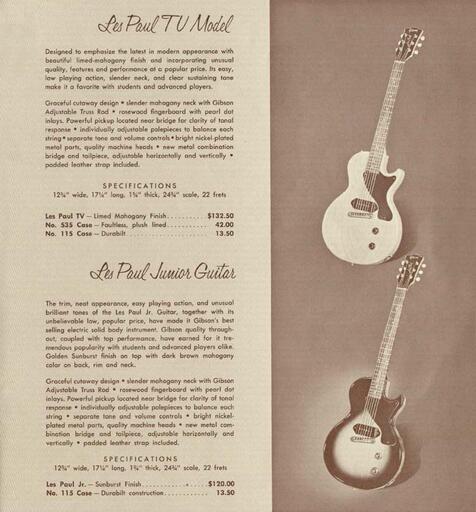 Les Paul Junior and TV Model comparison, 1958 catalog
Les Paul Junior and TV Model comparison, 1958 catalog
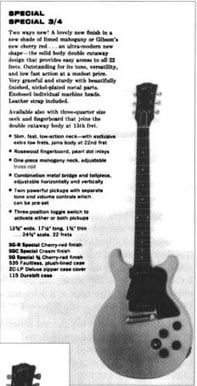 Les Paul Special on the 1960 catalog
Les Paul Special on the 1960 catalog
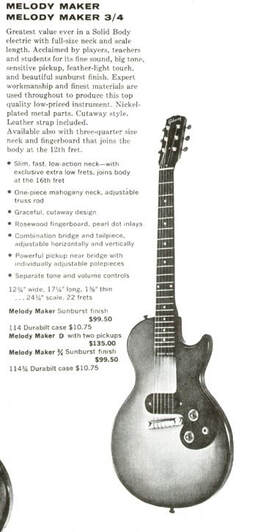 The Melody Maker on the 1960 catalog
The Melody Maker on the 1960 catalog

|
© COPYRIGHT 2014-2024 FUZZFACED.NET BY ANTONIO CALVOSA - TUTTI I DIRITTI RISERVATI
La copia, la riproduzione, la pubblicazione e la redistribuzione dei contenuti, se non autorizzate espressamente dall'autore, sono vietate in qualsiasi modo o forma. |

|
© COPYRIGHT 2014-2024 FUZZFACED.NET BY ANTONIO CALVOSA - ALL RIGHTS RESERVED
The copying, reproduction, publication and redistribution of the contents, unless expressly authorized by the author, are prohibited in any way or form. |